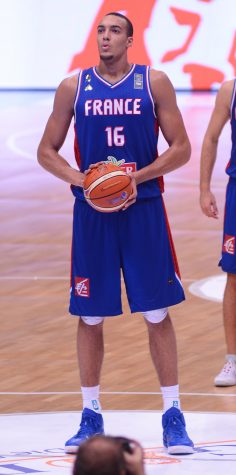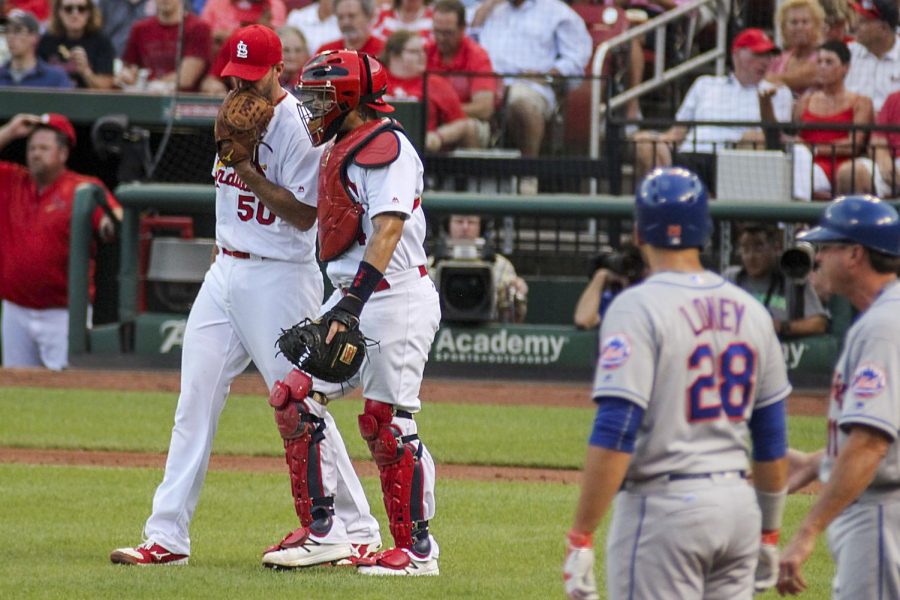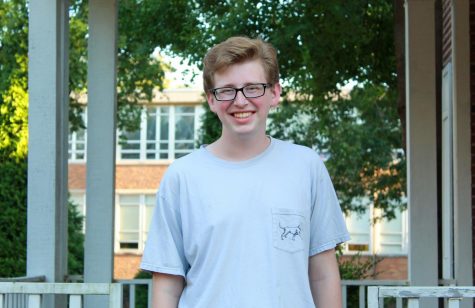Timeout 3: A Return to “Normalcy”
The St. Louis Cardinals have been ravaged by COVID-19 in recent weeks, with many players and staff infected.
August 10, 2020
Given the immediate, pressing concerns about everything from the economy to education due to COVID-19, we could all do with a few distractions now and again. What better distraction do we have than sports? Sadly, that’s hardly been an option this year. Sports have been devastated by the pandemic to say the least. COVID-19’s effects on the sporting world have, in many ways, mirrored its effects on the wider world. Some sports and leagues have handled their challenges remarkably, while others have put as much thought to COVID operating procedures as they have to putting a man on Mars. As a result, 2020 now holds the dubious distinction of most disrupted sporting season since World War II. To begin this year which will certainly contain some of the most compelling sports stories in a generation, I want to examine and compare the outlooks for a selection of leagues and events. This week and next week, we’ll consider professional football, baseball and basketball; college sports; and a smattering of others from across the globe.
NBA
Undoubtedly, one of the greatest successes in sports this year has been the National Basketball Association (NBA). Few can forget, however, its inglorious start to the pandemic. The diagnosis of the Utah Jazz’s Rudy Gobert with coronavirus on March 11 sparked a national awakening to the virus and directly led to the immediate indefinite postponement of the NBA’s season. Having intentionally touched every microphone at his team’s press conference regarding the virus days before, few offered any sympathy to Gobert.
For his part, league commissioner Adam Silver has been exceptionally pragmatic through the pandemic. The day after Gobert’s positive test, Silver instituted a series of protective measures for players and staff and refrained from any further decisions on the season’s future until the path of the virus developed further. Despite these efforts, several players, including such stars as Kevin Durant and Russell Westbrook, along with the owner of the New York Knicks, did eventually test positive for the virus. As of publication, 34 people associated with the league have tested positive.

After more than 70 days without sports, the long road back began when the NBA Board of Governors voted on June 4 on a plan to restart the season. The six-phase protocols brought players from their homes back to the courts. The NBA set up “The Bubble” at Disney World’s ESPN Wide World of Sports. A massive feat of collaboration between teams and medical staff, The Bubble maintains a semi-rigid barrier between players and the outside world. While staff at the complex are allowed to leave and return, players are monitored at all times by a wristband that tracks their location and vitals. Games resumed July 30, four and a half months after Gobert’s initial positive test. The first two weeks of games (through August 14) determine seeding for the championship tournament, with the Finals set to conclude no later than Oct. 12. Despite his dangerous apathy at the beginning of the pandemic, Gobert’s stance quickly shifted after his diagnosis, and he donated $500,000 to people affected by the virus. He had his own redemption when the season restarted: the Utah Jazz won the very first game in The Bubble, and Rudy Gobert scored the first point of the game.
All things considered, the NBA accomplished a smooth transition from pre- to post-COVID operations. Now for a league with a more… tumultuous story.
MLB
Major League Baseball (MLB) followed the NBA’s lead with a cancellation on March 12, as did most other sports leagues. The MLB was in the middle of Spring Training, and the season was set to begin a scant two weeks later on March 26, so teams were left scrambling to create a plan in the chaos. Unlike Adam Silver, MLB Commissioner Rob Manfred and his staff have been disastrous since March. The initial delay only pushed the season back two weeks, with the full indefinite delay coming four days later. A meeting between the league and its players association on the day the season was set to begin did little beyond establishing a prorated salary.
Debates within and between the league owners and the players association raged over possible plans for the season. Initial plans in April suggested a similar plan to the NBA Bubble, with games either solely in Phoenix or also in Miami and St. Petersburg. At this point, no one knew how many games to expect. As April dragged to May, though, unity broke. From mid-May to the end of June, no fewer than seven plans were exchanged between the two sides. They included seasons ranging from 60 to 114 games with a variety of benefits and salary rates. On June 13, the association sought to end negotiations, though it would take two more proposals and 9 days for the league to impose a 60 game schedule on the players. This squabbling was only the first time the league was made a laughing stock this season.
When players reported to their teams on July 1 under the disputed 60-game schedule plan, they did not arrive at a bubble as NBA players did. Instead, they walked into their home stadiums. When games began again on July 23, the players traveled from New York to Washington and from San Francisco to Los Angeles. A league already mired by nearly two months of ceaseless debate chose to send its players back to the wider world in the face of ever-rising COVID-19 numbers. Rather than even semi-isolate the league, the league has decided to enforce little to no restriction on the social activities of its players while sending them across the country. While the schedule was restructured to afford shorter travel for teams, trips such as Boston to Tampa and Houston to Seattle are regular occurrences.
To the surprise of approximately no one, COVID-19 cases quickly erupted. After the first weekend, a number of Miami Marlins players tested positive for the virus, prompting the postponement of both their games and the Philadelphia Phillies’ (their opponents that weekend). By the time of publication, as many as 24 Marlins tested positive. The next weekend, the St. Louis Cardinals made a similar announcement, postponing the past two weekends with a total of 13 positive cases.
While I am no epidemiologist, I find it hard to believe that the MLB’s plight was simply unavoidable. Since the NBA entered its Bubble on July 9, the league has announced 4 positive tests, with none since official games began July 30, despite some noticeable and well-publicized breaks of the Bubble. Meanwhile, the MLB is sitting with 37 confirmed cases in just two weeks since the first game. Other leagues with a bubble of their own (such as Major League Soccer, to be featured next week) have fared similarly to the NBA. The disaster that has beset Major League Baseball was likely completely avoidable. The virus is not to blame here: that honor goes to the conflicting goals of two groups that have done nothing but obstruct their own futures.









